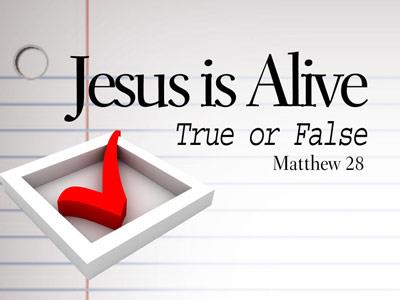-
Jesus Is . . . Who? Series
Contributed by Joe La Rue on Feb 21, 2008 (message contributor)
Summary: Introduction to the series, Who Is Jesus.
Title: Jesus Is . . .Who?
Series: Who Is Jesus? (Sermon # 1)
Text: Matt 16:13-17
Date: February 24, 2008
COPYRIGHT © Joe La Rue, 2008
INTRODUCTION
A. Almost two thousand years ago, on a hill outside the city of Jerusalem, a Jewish peasant named Yeshua was executed by crucifixion. In English, we call His name “Jesus.” After His death, He was taken down from the cross and buried. His followers subsequently claimed that He had been raised from the dead, and that they had seen Him alive. They proclaimed Him “the Christ,” which is a Greek translation of the Hebrew term, “the Messiah.” Both terms mean “the one anointed by God.” And they affirmed that this resurrected Jesus was the King of Kings and the Lord of Lords—in other words, the Absolute Ruler. And many of these followers ultimately died for refusing to recant that belief.
1. We know that much to be true. There is simply too much evidence to doubt it. In fact, the evidence for the existence of Jesus is as great or greater than the evidence for the existence of any other person from the ancient world. Consider the example of Julius Caesar. We know of Caesar’s life from four sources. Four ancient authors wrote about him, and it is only from these four sources that we know anything about Julius Caesar. And yet, no one doubts whether he existed, or the general circumstances of his life and reign.
2. With Jesus, though, the situation is vastly different. In addition to the four Gospels in the Bible that tell of his life and death, we have additional, non-biblical historians and authors from the period who confirm various aspects of Jesus’ life and death, and the early beliefs of Christians with regard to Jesus.
a. There was Josephus and Tacitus, who both wrote massive histories near the year A.D. 100 and included comments about Jesus, as well as the beliefs of His followers. There was Pliny the Younger, who was a Roman governor in the region of what today we call Turkey and who wrote about his interaction with the early Christians. And, there are the references to Jesus in the Jewish Talmud which confirm the Gospel claims. For instance, they state that Jesus was condemned to death for blasphemy, and they repeat the rumor that his father was unknown. These authors were not Christians; they were not sympathetic to Christianity; in other words, they had no reason to make up facts to support the Church’s claims.
b. There are also the early Christian writings, such as those by Ignatius, an early Christian leader, who wrote within the first 80 or so years of Jesus’s time and corroborated the basic outline of His life.
c. If all we had were these accounts, and we didn’t have any of the books found in the Bible, we would still have a considerable sketch of Jesus’s life. Professor Edwin Yamauchi, who up until he retired in 2005 was a professor of history at Miami University in Oxford, Ohio summarized it as follows:
“We would know that first, Jesus was a Jewish teacher; second, many people believed that he performed healings and exorcisms; third, some people believed he was the Messiah; fourth, he was rejected by the Jewish leaders; fifth, he was crucified under Pontius Pilate in the reign of Tiberius; sixth, despite this shameful death, his followers, who believed that he was still alive, spread beyond Palestine so that there were multitudes of them in Rome by a.d. 64; and seventh, all kinds of people from the cities and countryside—men and women, slave and free—worshiped him as God.”
(Lee Strobel, The Case for Christ 87 (1998)).
3. But we have more than the secular histories and references. We have the biographies written about Jesus as well: Matthew, Mark, Luke, and John. These were written near enough to the time of Christ’s life that they are reliable records of the events of His life. In fact, we have better documentary evidence with more reliable records for His life than for any other person from the ancient world. To take just a few examples from the religious realm:
a. The man who is known as “The Buddha” lived in the sixth century B.C., yet the first biography of Buddha was not written until the first century A.D., some 600 years after Buddha died. (Strobel at 87).
b. The biography of Muhammad, the founder of Islam, was not written until 145 years after his death. (Strobel at 87).
c. With Jesus, though, the situation is different. His biographies were written very near in time to his life. Matthew, Mark, and Luke were all written sometime between a.d. 50 and 70, only 20 to 40 years after Jesus died, and John was written just a little bit later. There were witnesses to Jesus’s life, still alive, who could have contradicted any fabrications or errors.

 Sermon Central
Sermon Central



